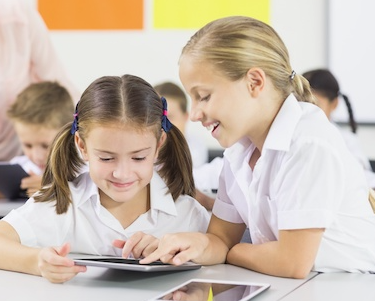Helping students become active participants in their learning is a key goal of personalized education. One of the most effective ways to empower students is to teach them how to monitor their own learning. When students learn to reflect on their progress, set goals, and adjust strategies, they become more self-aware, motivated, and successful learners. In inclusive and personalized classrooms, self-monitoring is a foundational skill that supports lifelong learning.
What Is Self-Monitoring?
Self-monitoring refers to a student’s ability to track their understanding, behaviors, and progress toward academic goals. It involves setting intentions, observing one’s performance, and making adjustments based on feedback or outcomes.
Why It Matters
- Builds Independence: Students become less reliant on external prompts and take more responsibility for their learning.
- Improves Metacognition: Self-monitoring enhances students’ ability to think about their thinking and understand how they learn best.
- Supports Personalization: When students can assess their progress, they can choose learning paths that suit their needs.
- Encourages Motivation: Recognizing their own growth helps students feel more confident and invested.
Strategies to Teach Self-Monitoring
- Introduce Reflection Routines
Begin with simple reflection questions such as “What did I learn today?” or “What was challenging for me?” Build routines around daily or weekly reflection. - Use Goal-Setting Activities
Guide students in setting specific, measurable, and time-bound learning goals. Revisit these goals regularly to track progress. - Teach How to Use Checklists and Rubrics
Provide tools students can use to assess their work before submission. Encourage them to self-score and revise accordingly. - Incorporate Learning Journals
Ask students to maintain journals where they record what they’re learning, what’s going well, and where they need help. - Model Self-Monitoring Skills
Teachers can demonstrate self-monitoring out loud by narrating how they solve a problem, revise their work, or evaluate their performance. - Provide Visuals and Trackers
Use progress charts, goal trackers, or digital dashboards to help students visualize their growth. - Include Peer and Teacher Feedback Loops
Use feedback to help students reflect and make plans for improvement. Encourage students to ask for feedback proactively. - Celebrate Progress
Highlight when students recognize and respond to their own learning needs. Share successes as part of classroom culture.
Supporting All Learners
- Differentiate Reflection Tools: Use drawing or verbal reflection for younger students or those with writing challenges.
- Provide Sentence Starters: Offer scaffolds such as “Today I improved in…” or “Next time I will try…”
- Check-In Regularly: Offer structured opportunities for students to review their learning with guidance.
Moving Forward
Teaching students to monitor their own learning doesn’t happen overnight, but with consistent practice and support, it becomes a powerful habit. In personalized classrooms, self-monitoring builds ownership, resilience, and a growth mindset.
By embedding self-monitoring into daily routines, educators can help students become reflective, confident learners ready to take charge of their education and their future.














